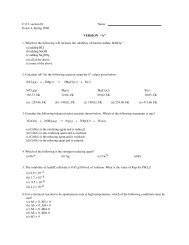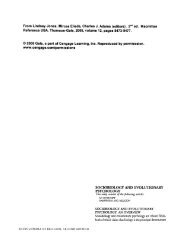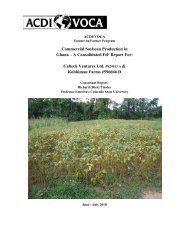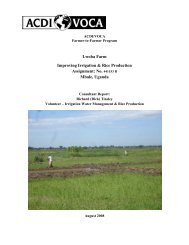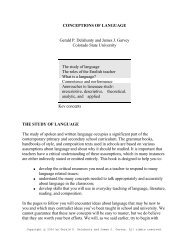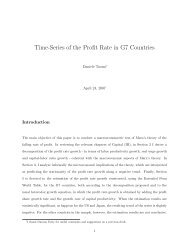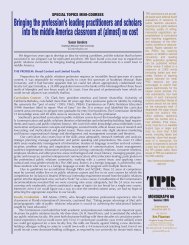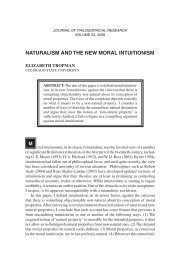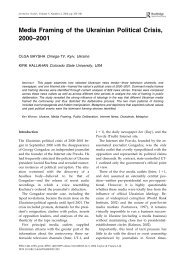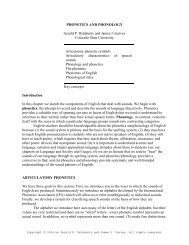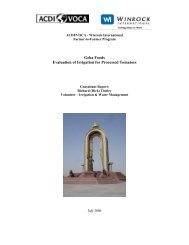Trail Log 1995-1997 - Lamar at Colorado State University
Trail Log 1995-1997 - Lamar at Colorado State University
Trail Log 1995-1997 - Lamar at Colorado State University
You also want an ePaper? Increase the reach of your titles
YUMPU automatically turns print PDFs into web optimized ePapers that Google loves.
66<br />
Fynbos:<br />
The main growth forms are:<br />
--restioid. evergreen, somewh<strong>at</strong> grasslike, solid round stems with joins, suggestive of rush or<br />
sedge. From family Restionaceae, genus Restio. Fynbos has 310 species in Restionaceae, and<br />
203 species in Cyperaceae (sedge). We walked through restioid growth all day. Restionaceae is<br />
almost confined to the Southern Hemisphere, principally South Africa and Australia. It is closely<br />
rel<strong>at</strong>ed to Juncaceae (rushes), but the flowers have a pendulous ovule and are unisexual, mostly<br />
dioecious. Superficially, they resemble Cyperaceae and where they are numerous in South Africa<br />
and Australia they take the place of grasses in the veget<strong>at</strong>ion. The family probably origin<strong>at</strong>ed in<br />
Australia, <strong>at</strong> least the most primitive members are there. Flowers in spikelets, the male ones with<br />
glume-like segments and three anthers. The female flowers have a superior ovary, 1-3 locules, and<br />
ovules th<strong>at</strong> are pendulous from the apex. Juncaceae have perfect flowers, 3 or 6-merous, and<br />
ovules ascending or parietal. Perhaps two-thirds of the species worldwide are in the Cape flora.<br />
--proteoid. Like Protea<br />
--ericoid. Like Erica, or he<strong>at</strong>h-like. small leaves, he<strong>at</strong>her like, often purplish or pink flowers, bell<br />
shaped.<br />
Intern<strong>at</strong>ional biologists visiting the fynbos are often struck with the lack of animals. No large<br />
mammals are seen roaming about, few bird calls can be heard, and one does not need insect proof<br />
netting to sleep <strong>at</strong> night. It can seem th<strong>at</strong> this corner of Africa is a botanical wonderland and a<br />
zoological desert. But there are many more inconspicuous animal and plant interactions.<br />
Especially common is seed dispersal by ants (myrmecochory), thought to be common where<br />
nutrients are low, seeds are expensive to produce and rodents are likely to e<strong>at</strong> seeds on the<br />
ground. Ants carry the seeds underground.<br />
Another factor is fire-stimul<strong>at</strong>ed germin<strong>at</strong>ion. Many of the seeds have to be smoked and/or burned<br />
to grow well. Many plants are serotinous, fruiting heads remain on the plant and open up only after<br />
fires.<br />
There are few fleshy fruited species.<br />
Many species have hard leaves, schlerophylly. This seem to be the reason why there are not many<br />
butterflies.<br />
August 14. Monday.<br />
We drove to Cape Town and rode the cable car up Table Mountain. Reasonably good day, but<br />
hazy in the distance. Shopping also.<br />
Went to the Rhodes Monument.<br />
August 15. Tuesday.<br />
Full day of meetings, and lecture in the afternoon. Spoke to the deb<strong>at</strong>ing club <strong>at</strong> their banquet th<strong>at</strong><br />
evening.



